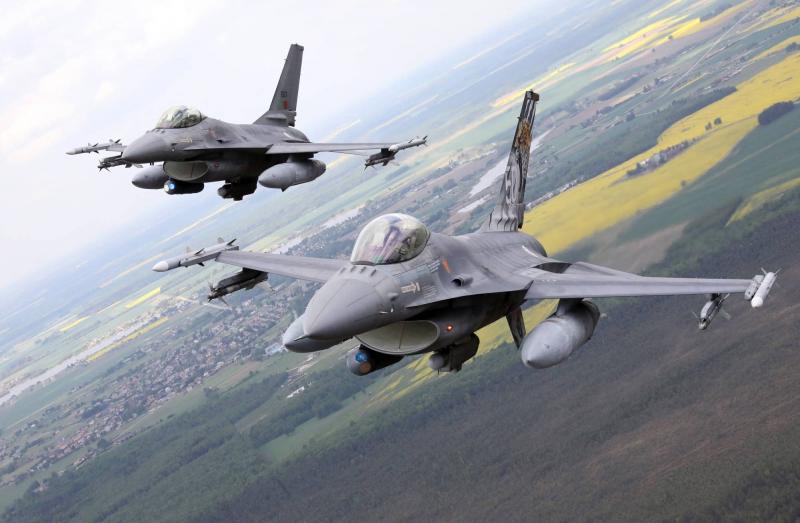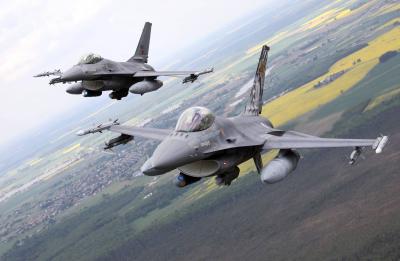What is the significance of NATO countries sending modern weapons to Ukraine, particularly the famous American fighter jets, the F16? Is there a link between these advanced weapons and the major surprise last week when Ukrainian forces invaded Russian territory and managed to occupy nearly a thousand kilometers in the border region of Kursk in the early days of August? Are these weapons solely to support Ukraine's resilience and prevent its defeat, or are they intended to continue draining Russia, especially after the Kursk surprise? Furthermore, is this all a preemptive measure by President Joe Biden’s administration due to the possibility of Donald Trump winning the election and consequently becoming embroiled in providing more support to Ukraine, contrary to his campaign slogan of reducing American support to Ukraine?
Those following this issue recall that during the NATO summit held in Washington in the second week of July, the Netherlands promised to send 24 F16 fighter jets to Ukraine. Belgium also committed to delivering 30 jets by 2028, Denmark promised 19, and Norway 6. Before attempting to answer, Ukrainian President Volodymyr Zelensky announced on August 4 that F16 aircraft had arrived in his country, and Ukrainian pilots had begun flying them after a 29-month wait since Russia's invasion on February 22, 2022. Zelensky, standing in a secret location between two fighter jets of this type, did not disclose the number of aircraft received nor the countries that supplied them, noting that the U.S. had allowed those possessing F16s to transfer them to Ukraine. However, in mid-May, Zelensky stated in an interview with Agence France-Presse that Ukraine needed about 130 F16 jets to achieve a relative balance with Russian forces.
This development cannot be separated from the fact that Zelensky succeeded in obtaining HIMARS rocket launchers, Patriot air defense batteries, and Abrams tanks. Returning to our initial question, it is worth reminding readers that the NATO summit greenlit member countries to supply Ukraine with more advanced weaponry, marking a significant qualitative leap compared to the Soviet-era weapons that had been provided to Ukraine since the beginning of the war, which were largely from former Warsaw Pact countries in Eastern Europe, most of which are now NATO members.
But are these weapons sufficient for Ukraine to repel continuing Russian advances, let alone recover territories occupied by Russian forces? There is nearly an agreement among experts that the arrival of fighter jets, tanks, and modern weapons in Ukraine is vital for its defense capabilities. A critical observation is that many experts and specialists doubt Ukrainian pilots' ability to master flying and operating these advanced jets, given that most had previously flown Russian-made jets like the MiG and Sukhoi. Perhaps this is why Zelensky was keen to express pride in his men for mastering these aircraft and promptly starting to use them.
There are reports of a collision between two French Rafale jets related to the training of Ukrainian pilots. Experts say that the F16 could enhance the performance of Ukrainian forces, both in repelling Russian attacks and in executing long-range strikes behind Russian lines, as well as tracking and intercepting cruise missiles used in attacks on the capital Kyiv, which seems to have occurred during the Kursk operation.
However, where is the problem in all of this? Many estimate that Russian forces are still using conventional weapons, but if they sense that NATO is beginning to send more qualitative weapons, they might contemplate using more advanced weapons, especially after the recent events in Kursk. A few days ago, Ukraine announced that it had sunk a Russian destroyer and struck energy facilities, particularly oil refineries. There are unconfirmed reports of Ukraine taking control of a nuclear power station in the Kursk area, and if these operations escalate, it may be impossible to predict the course of the confrontation, particularly as some observers believe that sending more qualitative weapons to Ukraine might bring the confrontation between Russia and NATO very close.
On the other side of the issue, experts suggest that President Biden's administration, along with NATO, wants to entangle Trump in a potential victory in next November's presidential election in a war with Russia. They aim to heat up the confrontation with Russia preemptively concerning Trump's possible victory. These experts believe that the decision to escalate the confrontation was made long ago, which can help us understand the sending of F16s and more advanced weaponry. Thus, we may comprehend the motives that led Ukraine to launch the Kursk operation in Russian territory, which could subsequently lead to Russia deploying more deadly qualitative weapons. That is the situation; could things evolve into direct confrontation? Nothing is now off the table.




